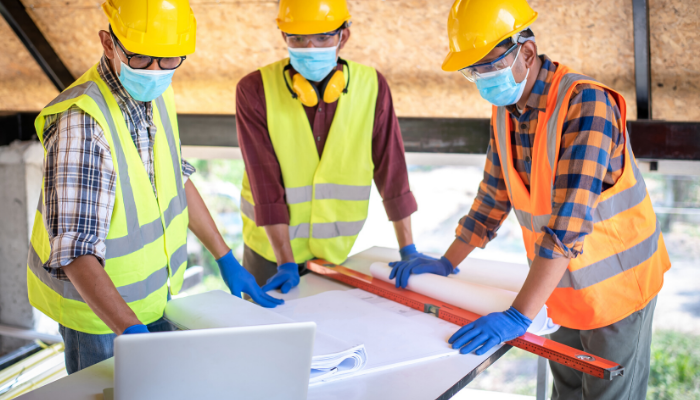Almost two months into the COVID-19 lockdown, India continues to witness an upsurge in contracted cases, thus eliminating possibilities of nationwide normalcy to return, anytime soon. On 11th May 2020, Prime Minister Narendra Modi declared a financial relief package for the MSME industries who contribute to almost 30% of India’s GDP, and potential relaxation of lockdown restrictions in some parts of the country. Does this imply that the service sectors must prepare to go back to work? Yes, to an extent.
The economy being in a dire need of reinforcement both in demand and supply sections, and with service sectors forming the backbone of Indian economy, several social distancing measures are to be rolled out to ensure the safety of the employees, once they are back to work. The pandemic may have put India digitally to work but the leaders, frontline workers and company spearheads anticipate lifting of the lockdown to gradually reboot the economy, the MSMEs, and to invigorate livelihood of daily laborers.
You might also be interested to read: Rs 20 Lakh Crore Stimulus Package Announced For Putting India Back To Work
Following are some of the employee safety measures to be expected to put India safely back to work:
Safety first: As India anticipates gradual revival of the economy, the employee’s safety will be a priority. Companies with staff over the age of 60 or with a medical history of diabetes or respiratory ailments will be advised to work from home. Likewise, for parents with children age 5 years and below. With evidence of the COVID-19 virus affecting the old and ailing more, necessary precautions will be taken by companies to safeguard them from the pandemic.
Social distancing: Employees reporting back to work must adhere to social distancing measures and ‘spaced’ interactions to ensure smooth functioning. Every employee will have to practice a safe distance of six feet from each other while working. The whole purpose of the lockdown is to communicate the significance of distancing to beat the virus. Like Taiwan for example, the country flattened the curve without going on lockdown, all because people austerely followed social distancing norms.
Sanitation and hygiene: Wearing a mask, especially N95 or medical mask, is mandatory by law already and the same would be applied at workspaces. Sanitation drives will have to be increased. Hand sanitizers and thermal screening are introduced and made compulsory in all offices. Employees will have to practice and promote good health and hygiene to help their company sail through the economic emergencies.
Travelling: Since public transportation will remain suspended throughout the nation, the companies will have to arrange transport facilities for their employees, while maintaining the travel guidelines of only 1-2 people in a vehicle. As group traveling is prohibited, employers can only look at resuming operations with 30-50% of the staff.
Avoid gatherings or clusters: Given the social distancing norms, all possible gatherings such as lunch or tea breaks must be avoided, and also group meetings should be suspended or not with more than 4-5 people. Using the elevator should be discouraged and also there are high possibilities of the ‘working-in-shifts’ concept coming into the picture to avoid assemblage of larger groups at one time.
You might also be interested to read: Impact Of COVID-19 On Businesses And Road To Recovery
Aside from the above-mentioned measures, most companies are mandating the installation of Aarogya Setu App. As we edge closer to the end of another lockdown phase, social distancing continues to remain the biggest weapon to flatten the curve. With all eyes on the dwindling economy and looming financial crisis, India prepares to put up a fight against the COVID-19 pandemic by implementing employee safety measures and putting India back to work safely and to restore nationwide normalcy.
References:
- PM Modi, CMs not in favour of lifting lockdown entirely by Sunetra Choudhury and Saubhadra Chatterji on 12 May 2020
- View: Getting back to work — carefully by Neeraj Bhargava, Joe Fernandes, Sankar Krishnan on 23 April 2020
- Starting April 20, India’s offices and workplaces will need to follow these norms on 20 April 2020
Related Topics:






